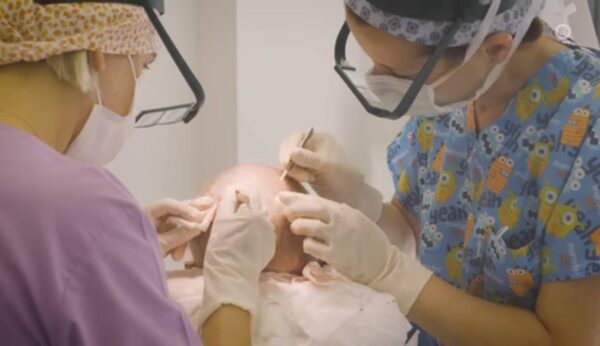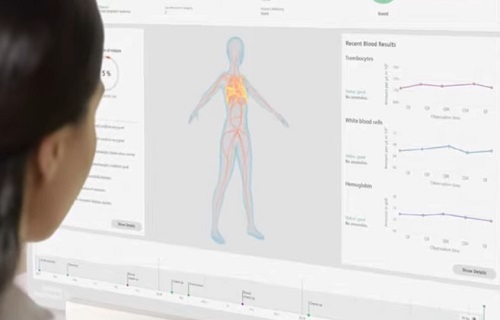Hernia is very common condition all ages people from all of the world suffering from it. Continuing daily routine life could be very hard for them. But there are several ways for treatment ways thanks to latest scientific developments. Also you can find tips and advices avoid and mitigate the effects of hernia.
What is Hernia ?
Hernia is a condition in which an organ or tissue protrudes through a weak point or tear in the surrounding muscle or connective tissue. There are several different types of hernias, including inguinal (in the groin), umbilical (around the belly button), and hiatal (in the diaphragm). Symptoms can include a bulge or lump in the affected area, pain or discomfort and difficulty with bowel movements. Hernias can usually be diagnosed through a physical examination and may be treated with surgery or other procedures.
What is 3 Type of Hernia ?
There are several types of hernias, but 3 most common types are:
- Inguinal Hernia: This type of hernia occurs in the inguinal canal, which is the passage in the abdominal wall that carries the spermatic cord in men and the round ligament in women. It is the most common type of hernia, accounting for 75% of all hernias.
- Umbilical Hernia: This type of hernia occurs at the navel or belly button. It occurs when part of the intestine bulges through the abdominal wall near the navel. It is more common in infants, but can also occur in adults.
- Hiatal Hernia: This type of hernia occurs in the diaphragm, the muscle that separates the chest and abdominal cavities. It occurs when a portion of the stomach bulges up through an opening in the diaphragm, called the hiatus. It is most common in people over 50.
These are the most common types of hernias but there are other types of hernias such as incisional, femoral, spigelian and others.


What is Symptoms of Hernia ?
The symptoms of a hernia can change according to type and location of the hernia. Common symptoms are:
- Bulge or Lump: This is the most common symptom of a hernia and the bulge may be visible or only palpable (able to be felt) when coughing, standing or straining.
- Pain or Discomfort: Some people with hernias may experience pain or discomfort in the affected area, especially when standing, coughing or straining.
- Weakness or Pressure: Some people may feel a sense of weakness or pressure in the affected area.
- Dragging Sensation: Some people may feel a dragging sensation in the affected area, which can be uncomfortable.
- Difficulties With bowel Movements: Hernias can sometimes cause difficulty with bowel movements, such as constipation or the inability to pass gas.
- Nausea and Vomiting: Hiatal hernias can cause nausea and vomiting.
In some cases, hernias can lead to bowel obstruction and strangulation, where the blood flow to the herniated tissue is cut off, cause to severe pain and tissue death. These symptoms require immediate medical attention.
Tips for Prevent Hernias ?
Here are some tips to help prevent hernias for all people:
- Healthy Weight: Being overweight or obese can put extra pressure on the abdominal wall and this extra pressure lead to increasing the risk of hernias.
- Exercise Regularly: Regular exercise can help prevent hernias by strengthening the abdominal muscles.
- Avoid Heavy Lifting: Lifting heavy objects can put extra pressure on the abdominal wall, increasing the risk of hernias.
- Avoid Straining During Bowel Movements: Straining during bowel movements can put extra pressure on the abdominal wall, increasing the risk of hernias. Especially be careful when you are in toilet.
- Stop Smoking: Smoking can weaken the muscles in the abdominal wall, increasing the risk of hernias.
- Be careful for Constipation: Constipation can put extra pressure on the abdominal wall. Especially when you are straining, you increase the risk of hernias.
- Use Supportive Belt: If you already have a hernia, wearing a supportive belt can help prevent it from getting worse and other injures.
- Surgery if Necessary: If you have a hernia that is causing pain or discomfort, or if it is at risk of becoming strangulated, surgery may be necessary.
It’s important to remember that some of the risk factors for hernias such as age, family history and some medical conditions are not modifiable, so it’s important to consult with a physician or surgeon for best diagnosis and treatment.
What is Hernia Rates ?
Hernia rates change according to type of hernia and the population being studied. Here are a few general statistics on hernia rates:
- Inguinal hernias are more common in men than in women, with a male-to-female ratio of approximately 3:1.
- Umbilical hernias are more common in infants and children than in adults. They are also more common in females than in males.
- Hiatal hernias are more common in older adults, with the highest incidence in people over the age of 50. They are also more common in women than in men.
- Incisional hernias are more common in people who have had abdominal surgery and the rates increase with the number of surgeries.
What is Parastomal Hernia ?
Parastomal hernia is a type of hernia that occurs around the stoma, which is an opening in the abdominal wall created during surgery to allow the passage of waste from the intestine or bladder. Parastomal hernia is a complication that can seen after surgery for conditions such as colorectal cancer, diverticulitis or inflammatory bowel disease.
Symptoms of parastomal hernia are similar to other types of hernias and can include:
- A bulge or lump around the stoma
- Pain or discomfort around the stoma
- Difficulty with bowel movements
- Displacement of the stoma or the surrounding skin
What is Treatment of Parastomal Hernia ?
Treatment of parastomal hernia change to the size and location of the hernia and the overall health condition of the patient. In some cases, a supportive belt or device may be used to help alleviate symptoms and prevent the hernia from getting worse. In more severe cases, surgery may be necessary to repair the hernia.
It is important to monitor for parastomal hernias after surgery, especially for patients who have had a colostomy or ileostomy. Patients should be educated on how to recognize the signs of hernia, as well as on the importance of maintaining good hygiene and regular follow-up with their surgeon or stoma care nurse.
What is Parastomal Hernia Radiopaedia ?
Radiopaedia is an online radiology resource that provides information and images related to radiology and medical imaging. On Radiopaedia, parastomal hernia is defined as a hernia that occurs around the stoma, which is an opening in the abdominal wall created during surgery to allow the passage of waste from the intestine or bladder.
Radiopaedia page on parastomal hernia typically includes information on the causes, symptoms, diagnosis and treatment of the condition, as well as radiographic images (such as CT or MRI scans) that can help to illustrate the condition.
Radiopaedia is a useful resource for radiologists, medical students, and other healthcare professionals to learn about various medical conditions and to access a wide range of imaging examples to improve their understanding. The site also allows to submit own cases and share with other radiologists, which helps to improve the knowledge and practice of radiologists.
What is Herniorrhaphy ?
Herniorrhaphy is a surgical procedure used to repair a hernia. The goal of the surgery is to push the protruding organ or tissue back into the abdominal cavity and to repair the weak point or tear in the surrounding muscle or connective tissue that caused the hernia.
Type of herniorrhaphy surgery performed will depend on the location and type of hernia. There are 2 types of herniorrhaphy surgery: open and laparoscopic.
- Open Herniorrhaphy: This is the traditional method of hernia repair, which involves making an incision in the affected area, pushing the protruding organ or tissue back into the abdominal cavity, and then repairing the weak point or tear in the surrounding muscle or connective tissue using suture, mesh or both.
- Laparoscopic Herniorrhaphy: This is a minimally invasive surgical technique that uses small incisions and specialized instruments to repair the hernia. It involves inserting a small camera, called laparoscope, through one of the incisions, which allows the surgeon to see inside the abdomen. The hernia is then repaired using suture, mesh or both.
Both open and laparoscopic herniorrhaphy are considered safe and effective treatment options but the choice of procedure will depend on the patient’s condition, the surgeon’s preference and the availability of the laparoscopic surgery in the facility.
It’s important to remember that after the surgery, patients will need to avoid heavy lifting and tiring activities for a period of time and may need to follow a specific post-operative care instructions provided by the surgeon.



What is Herniorrhaphy With Mesh ?
Herniorrhaphy with mesh is a surgical procedure used to repair a hernia in which a surgical mesh is used to reinforce the weakened area of the abdominal wall and prevent the recurrence of the hernia. The surgical mesh is usually made of synthetic materials such as polypropylene or polyester.
During the surgery, the protruding organ or tissue is pushed back into the abdominal cavity and the surgical mesh is placed over the weak point or tear in the surrounding muscle or connective tissue. The mesh is then secured in place using sutures or special surgical tacks.
The use of mesh in herniorrhaphy can provide several advantages over traditional herniorrhaphy without mesh:
- Reduces the risk of hernia recurrence: The surgical mesh provides additional support to the weakened area of the abdominal wall, which reduces the risk of hernia recurrence.
- Shorter recovery time: Because the mesh is used to reinforce the abdominal wall, there is less strain on the surgical repair, which can lead to a shorter recovery time.
- Can be used for large or recurrent hernias: Mesh can be used for large or recurrent hernias, which may not be treatable with traditional herniorrhaphy.
It’s important to note that, as with any surgery, herniorrhaphy with mesh carries some risks such as infection, bleeding and mesh-related complications. It’s important to discuss the benefits and risks with the surgeon before making a decision about surgery.
What is Differences Herniorrhaphy and Hernioplasty ?
Herniorrhaphy and hernioplasty are both surgical procedures used to repair a hernia but they are different in terms of the surgical technique used.
Herniorrhaphy is the traditional method of hernia repair, which involves making an incision in the affected area, pushing the protruding organ or tissue back into the abdominal cavity and then repairing the weak point or tear in the surrounding muscle or connective tissue using suture, mesh or both.
Hernioplasty, on the other hand, is a more modern surgical technique that uses a mesh to reinforce the weakened area of the abdominal wall and prevent the recurrence of the hernia. In hernioplasty, the mesh is placed over the hernia and secured in place, often with the use of sutures or special surgical tacks. The mesh acts as a support for the abdominal wall, preventing the hernia from recurring.
Both herniorrhaphy and hernioplasty can be done through open or laparoscopic approach, the choice of which will change to according to the patient’s condition, the surgeon’s preference and the availability of the laparoscopic surgery in the facility.
In summary, the main difference between herniorrhaphy and hernioplasty is that herniorrhaphy is the traditional method of hernia repair, using suture or mesh to repair the weak point or tear in the surrounding muscle or connective tissue. Hernioplasty is a more modern surgical technique that uses a mesh to reinforce the weakened area of the abdominal wall and prevent the recurrence of the hernia.
Best way for avoid and prevent hernia is support your muscles. You can find advices and tips for support your muscle tissue in below page.

